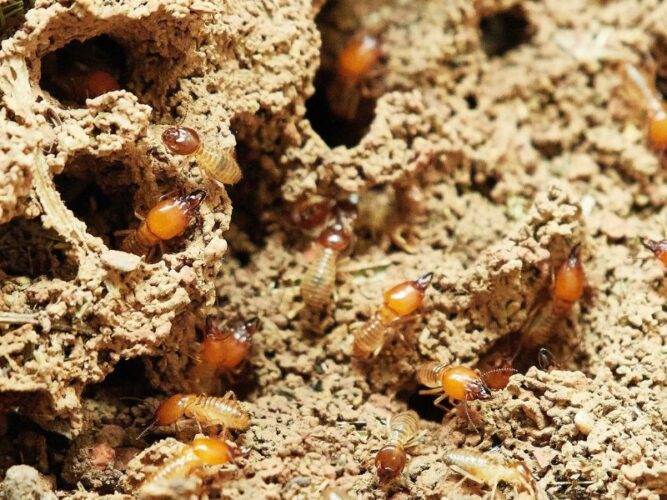Termites are destructive pests that can cause serious damage to wooden structures and furniture. They feed on cellulose, which is found in wood, paper, cardboard, and other plant materials. Termites can also affect the structural integrity of buildings by weakening the foundation, walls, and floors.
To protect your property from termite infestation, you need to take preventive measures and apply appropriate termite treatments. Termite treatment is a chemical procedure that creates a barrier around the building to prevent and kill termites.
There are different types of termite treatments depending on the stage of construction and the extent of infestation.
Pre-Construction Termite Treatment
Pre-construction termite treatment is done before the building is constructed. It involves treating the soil, masonry, and wood with anti-termite chemicals to prevent termite entry and damage. The procedure for pre-construction termite treatment is as follows:
For the excavation made for the foundation, the sides and the bottom surface of the foundation trenches and pits are treated with an anti-termite chemical to a height of about 30 cm at the rate of 5 liters per square meter of surface area.
For flooring, the earth’s surface is cleaned of wood and any other garbage particles. The entire surface is leveled to the required elevation. Holes of 30 cm depth at an interval of 15 cm are made.
An emulsion of correct concentration (as mentioned in the manufacturer’s specification) is made by adding water to the chemical. This emulsion is poured into the holes by pouring jars and sprayed on the surface using pressure pumps and sprayers. The chemical is allowed to get soaked through the holes fully.
The benefits of pre-construction termite treatment are:
- It is less expensive than post-construction termite treatment as it involves fewer steps and materials.
- It has fewer obstacles as it gives better access to every nook and corner of the building without any interference.
- It prevents termite infestation from the start rather than curing it after the damage is done.
Post-Construction Termite Treatment
Post-construction termite treatment is done after the building is constructed and occupied. It involves inspecting the building for signs of termite infestation and applying termite treatments to the affected areas. The procedure for post-construction termite treatment is as follows:
Inspection: Before undertaking any type of treatment, a thorough inspection is made of the infestation in the building with a view to determining the extent to which it has spread, and the routes of entry of termites into the building.
Soil Treatment: Since subterranean termites live in the soil, termite treatments are used on the surrounding soil to act as a treatment barrier. First, a trench is dug around the foundation, and the soil is treated with a termiticide. The trench is then refilled.
Wood Treatment: For wood that is exposed or accessible, termite treatments are applied directly to the wood surface or injected into the wood. Wood treatments protect the wood from termite damage and also kill any termites that are present in the wood.
Baiting System: Termite baits use poisoned food to attract and eliminate termite colonies. Termite baits are placed in strategic locations around the building where termites are likely to forage. The termites feed on the bait and carry it back to their nest, where they share it with other termites.
The Benefits of Post-construction Termite Treatment Are:
- It has some control over existing termite invasion and forestalls further harm to the structure.
- It can reduce the use of chemicals and target specific areas of infestation.
- It is able to adjust based on how well the treatment is working.
Safety and Precautions
Chemicals used in termite treatments can be harmful to people, animals, and plants if handled improperly. As a result, when treating termites, certain safety precautions must be taken:
Termite treatments should be carried out by a licensed, specialized company with the equipment and experience necessary to carry them out safely and effectively.
The manufacturer’s instructions and specifications, as well as the applicable standards and regulations, should be followed when treating termites.
Termite medicines ought to be finished with appropriate individual defensive hardware (PPE) like gloves, goggles, covers, and boots.
Termite medicines ought to be finished with satisfactory ventilation and keep away from contact with skin, eyes, and mouth.
Termite medicines ought to be finished with care and try not to taint water sources, food things, and plants.
When treating termites, exercise caution and keep pets, children, and other individuals out of the treated area until it is safe to do so.
Treatment for termites is an essential step in preventing termite damage and infestation. By picking the right kind of termite treatment and following the appropriate strategy and well-being measures, you can guarantee durable and powerful termite control.

